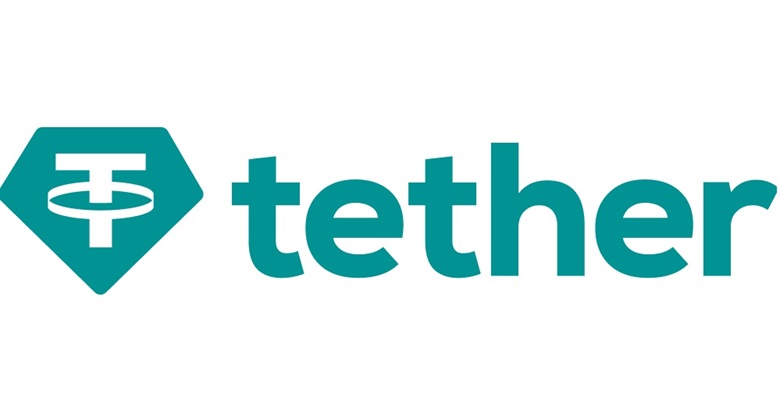Tether’s Stablecoin Dominance: When Regulators Need the Token More Than It Needs Them

As stablecoins become central to global digital finance, one token stands out not just in dominance, but in controversy: Tether’s USDT. While debates over transparency and regulatory compliance persist, USDT has quietly become the most widely used digital dollar in the world. Its position reflects undeniable Tether stablecoin dominance.
A landmark report by Artemis, Castle Island Ventures, and Dragonfly estimates that between January 2023 and February 2025, $94.2 billion in real-world stablecoin payments were processed across 31 companies. Of that, nearly 90% flowed through USDT. These are not speculative trades or DeFi loops. This is commerce: B2B settlements, P2P remittances, card-linked purchases, payroll disbursements.
It reflects a fundamental shift: regulators may now need Tether more than Tether needs them.
The Digital Dollar They Didn’t Plan For
In many parts of the world, Tether is not a crypto asset. It’s a currency. From Nigeria to Colombia, from Turkey to the Philippines, from Lebanon to its diaspora, USDT is used to hedge inflation, settle cross-border invoices, and send money to family. In countries with unstable currencies, capital controls, or broken banking systems, Tether is filling a gap traditional finance never could.
And it does this not through licensed banks or central bank partnerships, but through decentralized rails, primarily Tron, which offers near-zero transaction fees and instant transfers.
According to the same Artemis-led report, Tron is the dominant blockchain for stablecoin transfers, especially for USDT, which sees the majority of its real-world volume settled on Tron. This speaks directly to Tether stablecoin dominance in markets where frictionless transfers matter most.
While USDC and other regulated stablecoins have taken the slow road, Tether went where the demand was strongest, moving fast, scaling faster, and building influence without waiting for approvals. And for all the regulatory heat it attracts, USDT is now deeply embedded in the global financial fabric.
The UAE Case: Recognition Without Embrace
In late 2024, the Abu Dhabi Global Market (ADGM) recognized USDT as an Accepted Virtual Asset — but only on Ethereum, Solana, and Avalanche. It notably excluded USDT on Tron, despite Tron being Tether’s dominant issuance network and the backbone of its global transaction volume.
This exclusion is not just technical; it’s regulatory. ADGM’s decision to exclude Tron reflects deeper concerns about the network’s compliance posture and transparency. Yet ironically, Tron is the very chain enabling real-world adoption of USDT at scale, reinforcing Tether stablecoin dominance globally, especially in cross-border commerce.
This was a critical distinction. Recognition by ADGM allows VASPs to offer USDT for trading and investment, but not necessarily for payments.
To be used legally for payments within the UAE, any foreign-issued stablecoin must be registered with the Central Bank of the UAE under the Payment Token Services Regulation. This regulation creates a pathway for foreign issuers like Tether to register, share whitepapers and off-chain data, and be allowed for payment use.
As of June 2025, Tether has not publicly registered with the Central Bank under this framework.
This means that USDT is currently legal in the UAE only for investment purposes, not for merchant payments, salary transfers, or other domestic payment uses.
In August 2024, Tether announced a partnership with Phoenix Group to issue a dirham-pegged stablecoin. But according to sources close to the matter, the partnership never materialized. Tether is still shopping for local partners, and UAE banks remain hesitant, likely due to compliance risks and the scrutiny involved in working with an entity often flagged by global regulators.
The Legal Grey Zone: Should UAE Exchanges Delist USDT?
All UAE-licensed exchanges — both under ADGM and Dubai’s VARA — currently list USDT. They allow users to trade, hold, and convert it alongside other crypto assets. Given that USDT is not registered with the Central Bank, should it be delisted?
The answer lies in a regulatory nuance.
Under current rules:
- Foreign stablecoins can be offered for investment without registration.
- They cannot be used for payments unless the issuer is registered.
So exchanges offering USDT for investment purposes are compliant. But if any platform allows payment use cases — e.g., merchant plugins, remittance rails, payroll integrations — using USDT, they would be in breach of UAE law.
For now, UAE regulators appear to tolerate USDT’s presence in trading venues, so long as no payment functions are enabled. But the situation is unstable.
The BIS Enters the Chat
In 24 June 2025, the Bank for International Settlements (BIS) issued its starkest warning yet on stablecoins. In its report, the BIS called stablecoins “a form of unsound money,” claiming they fail key monetary functions like singleness, elasticity, and integrity. It specifically highlighted concerns over transparency, pointing at Tether’s reserve practices, and warned that mass liquidations of backing assets could trigger financial instability.
But beneath the caution lies a deeper truth: central banks feel threatened. In countries where fiat fails to maintain value, where banking infrastructure is patchy, and where remittance costs are high, USDT has become the de facto digital dollar. The BIS fears what it cannot control — and stablecoins, especially Tether, have already scaled far beyond institutional reach.
This reaction shows that the real challenge isn’t about regulation. It’s about relevance. Stablecoins are now the monetary rails for the unbanked and underbanked. And even as central banks push for CBDCs and unified ledgers, they are trying to catch up to a reality already in motion.
This reinforces the paradox at the heart of global finance: the people have adopted Tether. Now it’s the regulators — and even the BIS — who must decide whether to work with it, compete with it, or attempt to shut it out entirely.
The Paradox Deepens
Tether remains unlicensed in many jurisdictions. Yet it’s the backbone of stablecoin commerce. It’s the digital dollar of choice for millions. And even in countries with clear regulations like the UAE, it occupies a legal grey zone — traded but not fully accepted, indispensable but not fully endorsed.
For regulators, this is the challenge: You can draft policies, issue licenses, and build alternatives. But until a better solution exists, USDT will continue to do the job nobody else can.
And that’s the uncomfortable truth: in today’s global financial realignment, it may be the regulators who need Tether more than Tether needs them — a testament to Tether stablecoin dominance in the world of digital money.





